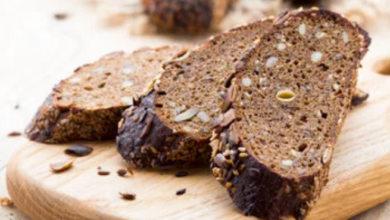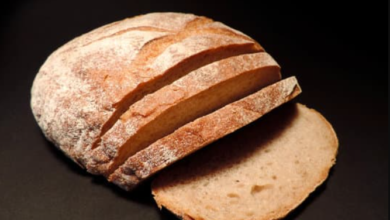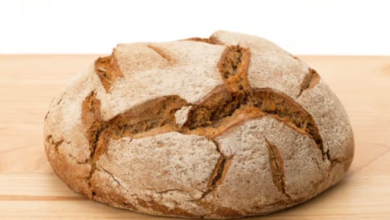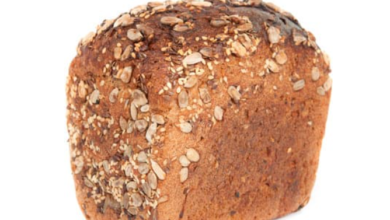Why is my rye bread flat? Is there a problem?
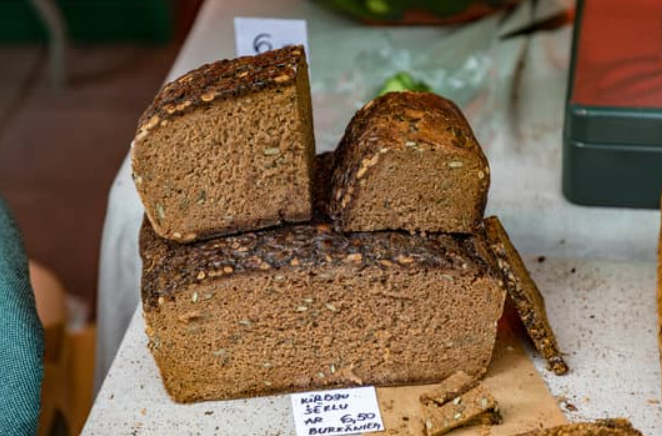
What To Know
- Knead the dough for the recommended amount of time, or use a stand mixer with a dough hook.
- Baking rye bread can be a rewarding experience, and understanding the factors that contribute to a flat loaf can help you achieve the perfect rise.
- Yes, you can substitute up to 50% of the rye flour with wheat flour or other types of flour, but this will affect the flavor and texture of the bread.
Baking rye bread can be a rewarding experience, but encountering a flat loaf can be disheartening. If you’re wondering “why is my rye bread flat,” this comprehensive guide will delve into the potential causes and provide solutions to help you achieve the perfect rise.
Understanding the Factors that Contribute to Bread Rise
Before delving into the specific reasons for a flat rye bread, it’s essential to understand the factors that contribute to bread rise:
- Yeast Activity: Yeast is a fungus that consumes sugar and produces carbon dioxide gas, causing the bread to rise.
- Gluten Formation: Gluten is a protein network that traps the carbon dioxide gas, creating structure and elasticity in the bread.
- Fermentation: The process of yeast consuming sugar and producing carbon dioxide creates a fermentation process.
Common Causes of Flat Rye Bread
1. Insufficient Yeast Activity:
- Using old or inactive yeast can result in insufficient gas production, leading to a flat loaf.
- Not activating the yeast properly in warm water before adding it to the dough can hinder its activity.
2. Weak Gluten Development:
- Rye flour contains less gluten than wheat flour, making it crucial to ensure proper gluten formation.
- Overmixing the dough can weaken the gluten network, resulting in a flat loaf.
3. Inadequate Fermentation:
- Not allowing the dough to ferment long enough prevents the yeast from producing sufficient carbon dioxide.
- The dough should be allowed to rise in a warm, draft-free environment to promote fermentation.
4. Excessive Proofing:
- Overproofing the dough can cause the gluten network to break down, leading to a flat loaf.
- The dough should be proofed until it has doubled in size, but not overproofed.
5. Incorrect Baking Temperature:
- Baking the bread at too low a temperature can inhibit the rising process.
- The oven should be preheated to the correct temperature before baking the bread.
6. Dense Dough:
- Adding too much flour or not enough water can result in a dense dough that inhibits rising.
- Ensure the dough is the correct consistency, not too wet or too dry.
7. Improper Shaping:
- Shaping the dough incorrectly can trap air pockets and prevent proper rising.
- The dough should be shaped into a tight, round loaf with minimal air pockets.
Troubleshooting Tips
- Check Yeast Activity: Test the yeast by dissolving it in warm water with a pinch of sugar. If it bubbles and foams, the yeast is active.
- Develop Gluten: Knead the dough for the recommended amount of time, or use a stand mixer with a dough hook.
- Allow Adequate Fermentation: Let the dough rise in a warm place until it has doubled in size.
- Avoid Overproofing: Proof the dough until it has doubled in size, but not beyond.
- Preheat Oven: Ensure the oven is preheated to the correct temperature before baking.
- Adjust Dough Consistency: Add additional flour or water as needed to achieve the correct dough consistency.
- Shape Properly: Shape the dough into a tight, round loaf with minimal air pockets.
In a nutshell: Mastering the Art of Rye Bread Baking
Baking rye bread can be a rewarding experience, and understanding the factors that contribute to a flat loaf can help you achieve the perfect rise. By following the troubleshooting tips outlined in this guide, you can master the art of rye bread baking and enjoy delicious, fluffy loaves every time.
Frequently Asked Questions
Q: Why does my rye bread have a dense crumb?
A: Overmixing the dough, insufficient fermentation, or using too much flour can result in a dense crumb.
Q: How can I improve the flavor of my rye bread?
A: Adding sourdough starter, caraway seeds, or rye malt can enhance the flavor and complexity of rye bread.
Q: Can I use a different flour to make rye bread?
A: Yes, you can substitute up to 50% of the rye flour with wheat flour or other types of flour, but this will affect the flavor and texture of the bread.
